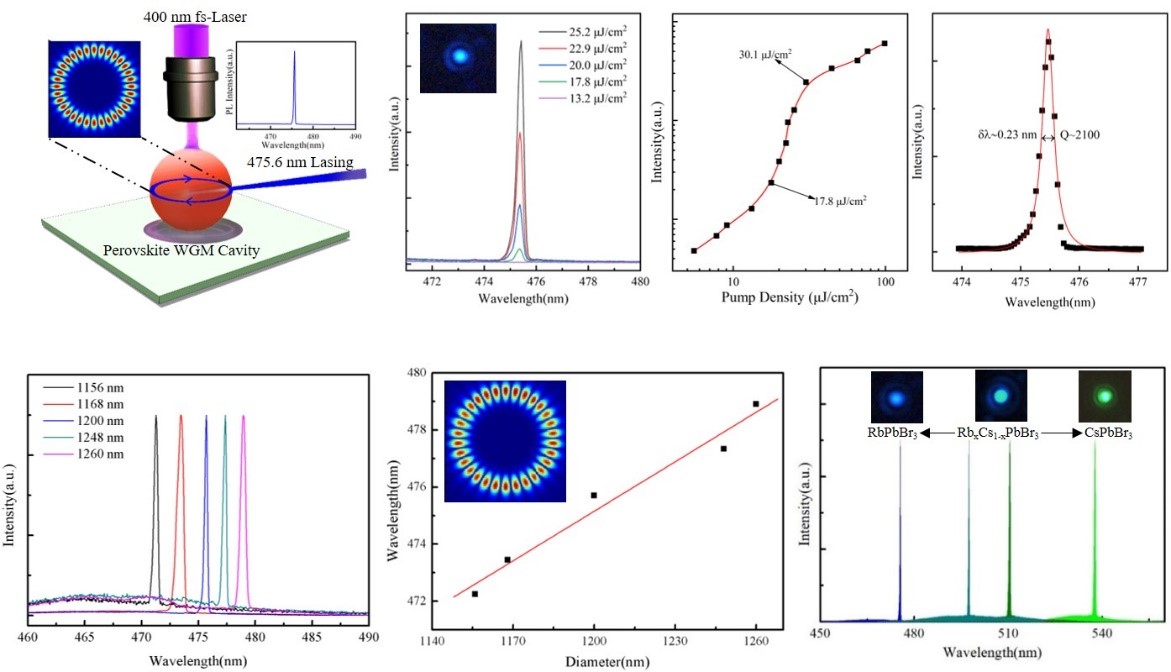
Semiconductor nanolaser, with high spectral purity and stability, namely single-mode nanolaser, is very desirable in color laser display, on-chip optical communication and computing. To date, most of reported nanolasers just exhibit multimode structure resulting from inhomogeneous gain saturation, while the realization of high-quality single-mode laser is very challenging, which is largely limited by the cavity structure and the property of gain medium.
All-inorganic perovskite micro/nanostructure has been demonstrated to be a promising candidate for achieving high-performance nanolaser. However, the Goldschmidt tolerance factor t of many structures is lower than the threshold value (t~0.8) for realizing an all-inorganic perovskite of the ABX3 form, resulting in few alternatives for A cation.
Rubidium, the neighbor element of cesium, is another potential choice for the A cation to gain all-inorganic perovskites. Moreover, RbPbBr3 perovskites may exhibit novel photonic and optoelectronic properties and help understand the structure-property relationship of perovskite.
Recently, a collaboration researcher team from Shanghai Institute of Optics and Fine Mechanics of the Chinese Academy of Sciences (CAS), Shanghai Institute of Technical Physics of CAS and Nanjing Xiaozhuang University, realized a high quality single-mode laser in another all-inorganic perovskite RbPbBr3 microsphere. The findings were published in Angewandte Chemie International Edition.
According to the study, all-inorganic perovskite RbPbBr3 microspheres fabricated through a chemical vapor deposition process had a regularly spherical shape, smooth surface and strong photoluminescence emission at ~464 nm.
These microspheres could function as optical cavity and a gain media to achieve single-mode nanolaser. Under the pumping of a 400 nm femtosecond laser, high-quality single-mode laser was realized in an individual RbPbBr3 microsphere (D~1.2 μm) with a narrow linewidth and low lasing threshold.
Also, broadband high-quality single-mode nanolaser from 475-540 nm could be obtained by tuning the cavity size and the molar ratio of rubidium and cesium anions. Theoretical simulations using the finite domain time difference solution showed strong optical confinement of RbPbBr3 spherical microcavity, that was why most microsphere nanolaser exhibited excellent performance.
The work demonstrated a new gain medium for the achievement of high-quality single-mode nanolaser, and provided a new platform to explore the structure-property relationship of perovskite family.

High-quality single-mode nanolaser in RbPbBr3 microsphere (Image by SIOM)

86-10-68597521 (day)
86-10-68597289 (night)

52 Sanlihe Rd., Xicheng District,
Beijing, China (100864)

